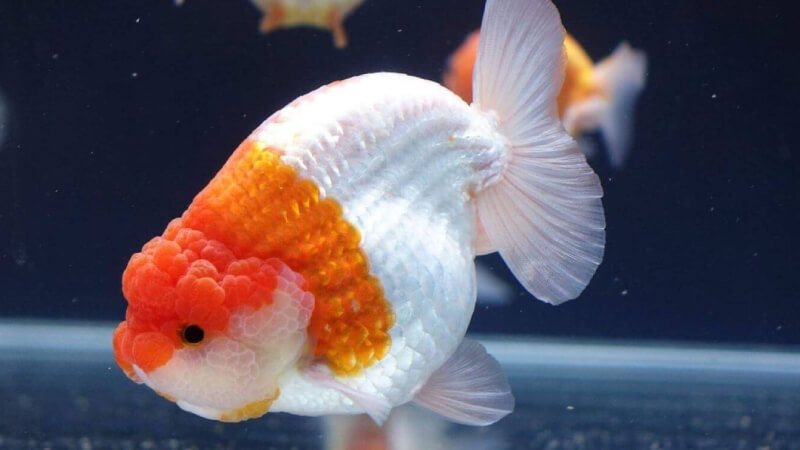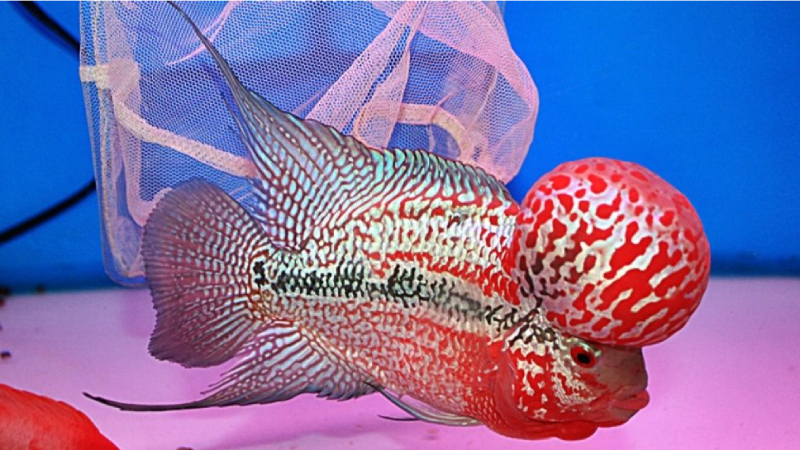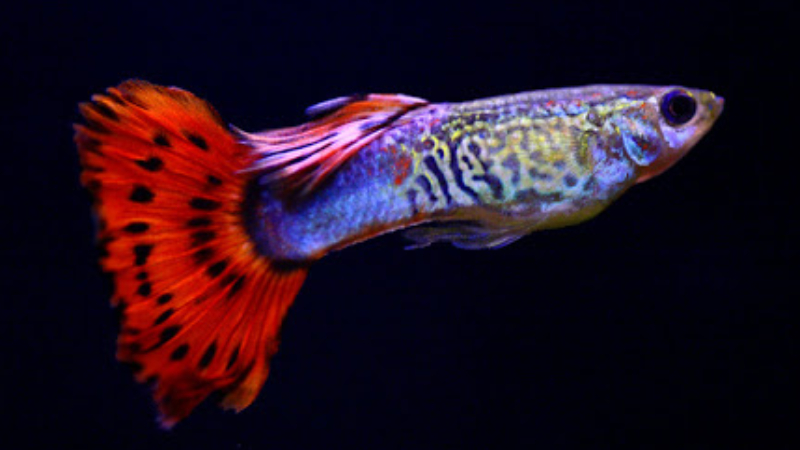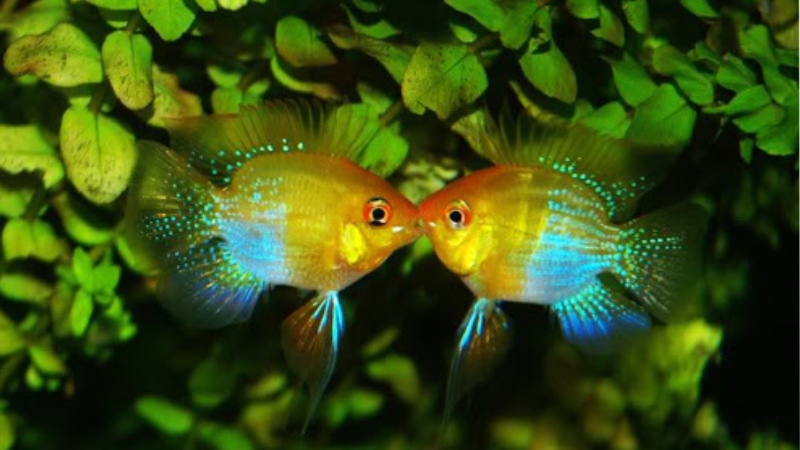1 Ranchu Goldfish
The Ranchu Goldfish, also known internationally as the Buffalo Head Goldfish, is a captivating species originating from Japan. Japanese breeders meticulously crafted this variety from the Carassius auratus lineage, resulting in a distinctive and captivating fish. What sets the Ranchu apart is its chubby body, rounded belly, and graceful, flowing tail, creating a unique and enchanting appearance.
Ranchu goldfish are powerful swimmers, exhibiting a graceful and relaxed swimming style. Their movements are delicate and elegant, making them a favorite among fish enthusiasts. A well-balanced diet for Ranchus includes bloodworms, pellet food, and aquatic plants or algae found in ponds.

Ranchu goldfish thrive in clean environments, free from pathogens and diseases. Regular water changes and tank maintenance are essential to providing the optimal habitat for these fish. It is recommended to change only a portion of the water at a time, allowing the fish to gradually adjust to the new conditions.
2 Flowerhorn Cichlid
The Flowerhorn Cichlid, with its international name, Flowerhorn, is a tropical fish species native to South America, belonging to the Cichlid family. Through dedicated breeding programs, fish enthusiasts have developed the vibrant and diverse varieties we see today.
The distinctive features of the Flowerhorn include its fanned tail, long and slender fins, moderately sized eyes, and short gills. The most prized feature, however, is a prominent head bump, which is considered a mark of beauty and desirability among breeders and enthusiasts alike. This bump is often likened to the silhouette of a wise old man, adding to the fish’s allure.

Flowerhorns thrive in temperatures ranging from 25-30°C (77-86°F) and a pH level between 6.5 and 7.8. They are omnivores and reproduce by laying eggs. Known for their robust health, Flowerhorns can live for over a decade with proper care and attention, making them a long-term companion for dedicated fish keepers.
3 Siamese Fighting Fish
The Siamese Fighting Fish, also known as Betta, is a vibrant species native to Southeast Asia, particularly Thailand. With their stunning colors and distinctive fan-like tails, these fish are a true sight to behold. Belonging to the Osphronemidae family (also known as the gourami family), they have captured the hearts of fish enthusiasts worldwide.
Adult Betta fish typically reach a length of 6 cm (2.4 inches), with some varieties growing up to 8 cm (3.1 inches). In their natural habitat, they feed on small invertebrates and insect larvae. Due to their tiny stomachs, it’s important to provide small, frequent meals, ideally two or three times per day.

4 Guppy
The Guppy, or Poecilia reticulata, is a member of the Poeciliidae family and is native to Trinidad and several regions in South America. Today, they are found in almost every country worldwide, except for Antarctica, showcasing their adaptability and popularity.
Guppies are known for their diverse and vibrant colors, making them a favorite among fish enthusiasts. They thrive on a varied diet that includes worms, shrimp eggs, and pellet food. As they have small appetites, it’s important to provide just enough food to avoid overfeeding and maintain water quality.

While guppies can survive for up to a week without food, a well-fed guppy with a balanced diet will display its vibrant colors optimally.
5 Swordtail
The Swordtail, also known simply as Swordtail, is a member of the Poeciliidae family and is native to certain regions of the American and African continents. They are a popular choice for freshwater aquariums due to their distinctive long, sword-like tail, small body, and attractive, eye-catching dorsal fin.
Swordtails are easy to care for and are known for their peaceful nature. While male Swordtails may compete for female attention, they generally coexist peacefully with other species. They are omnivorous and adaptable, accepting a variety of foods, including pellets and larvae such as bloodworms.

As Swordtails are small and slow to adapt to environmental changes, it’s crucial to maintain a stable habitat to ensure their well-being.
6 Ram Cichlid
The Ram Cichlid, or Mikrogeophagus ramirezi, is a colorful and captivating member of the cichlid family, native to the Orinoco River basin in Venezuela and Colombia, South America. It has gained popularity among fish enthusiasts worldwide due to its stunning appearance and relatively small size.
The Ram Cichlid boasts brilliant colors and a unique pattern of spots and stripes that adorn its body. Its fins are elongated and fan-shaped, adding to its graceful appearance. What’s truly remarkable about this species is the holographic effect of their scales, which change color and intensity depending on the lighting conditions.

These fish are active swimmers and are known for their peaceful nature. They tend to pair up and can be kept with other peaceful species. Ram Cichlids are omnivores with a preference for animal-based foods, including worms, crustaceans, insect larvae, and pellet food. It’s important to provide a balanced diet and avoid overfeeding to maintain water quality.

We hope that this guide has provided you with valuable insights into these fascinating freshwater fish species, their captivating appearances, and their relatively simple care requirements. With this knowledge, we trust that you’ll be able to select the perfect fish to enhance your home and bring you joy for years to come.
>>
>>
>>

































